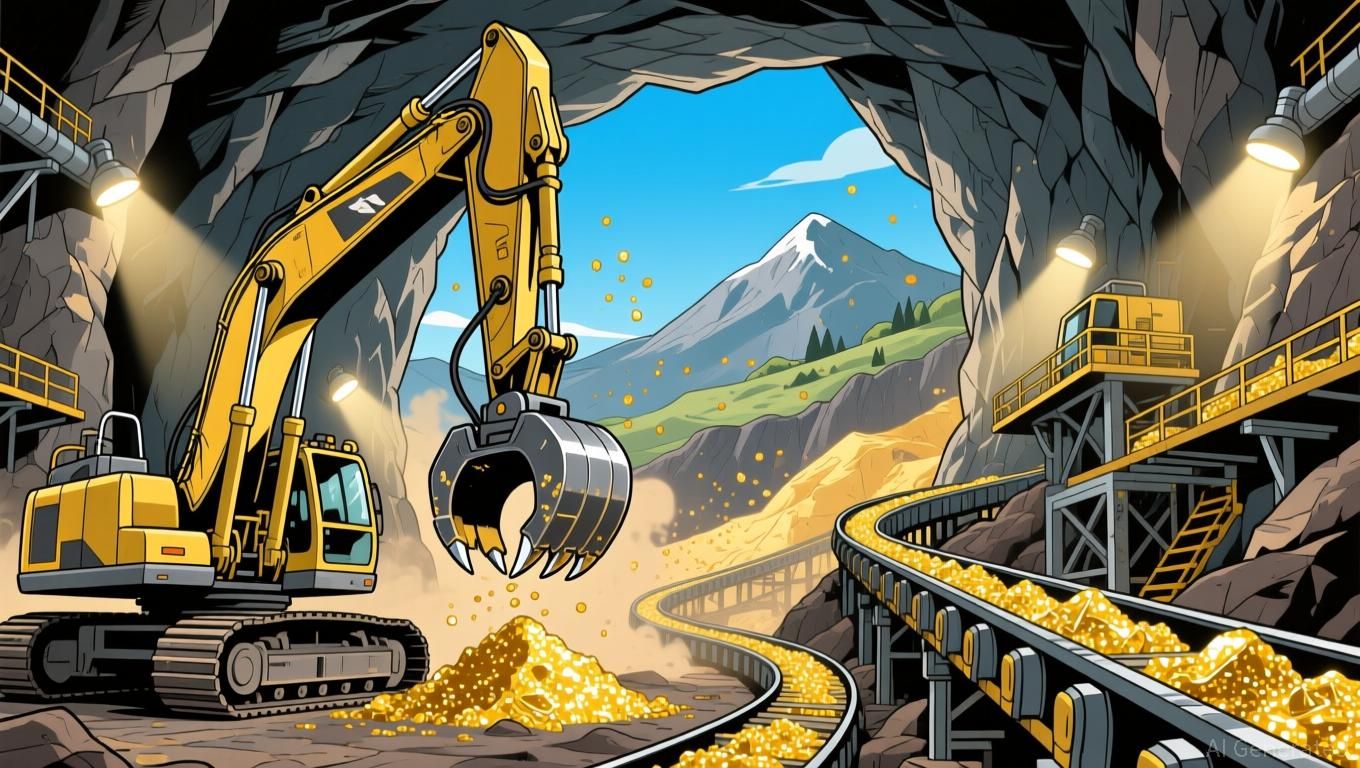Kiyosaki: Rising AI and Political Stalemate Set Stage for Imminent Wave of Job Losses
- Robert Kiyosaki warns mass layoffs could accelerate due to AI automation and U.S. government shutdown risks. - He highlights vulnerable sectors like admin/support roles, citing Goldman Sachs' 25% U.S. job exposure estimate to AI disruption. - Kiyosaki stresses political gridlock may delay AI infrastructure projects and workforce reskilling efforts critical for economic transition. - While acknowledging AI's potential for growth in healthcare/energy, he urges balanced policies prioritizing human-AI collab

Robert Kiyosaki, best known for writing Rich Dad Poor Dad, has delivered a serious alert regarding the potential for widespread layoffs, attributing the risk to both the swift progress of artificial intelligence (AI) and the possibility of a U.S. government shutdown. In his recent analysis, Kiyosaki pointed out that the combination of AI-powered automation and ongoing economic uncertainty could intensify job losses, resulting in an unpredictable climate for employees and companies. His comments arrive as anxiety grows about how fast technology is changing the employment landscape.
Kiyosaki’s concerns are consistent with broader forecasts about AI’s influence on jobs. Sam Altman, OpenAI’s CEO, has suggested that by 2030, AI might automate 30–40% of economic activities. Kiyosaki warns that the overlap of rapid AI integration and political instability could speed up workforce reductions. He noted that industries involving repetitive or routine work—like administrative support, customer service, and manufacturing—are especially at risk. This view is supported by a Goldman Sachs analysis, which predicts that almost a quarter of U.S. jobs could be heavily impacted by AI, with office and administrative positions being the most susceptible.
The risk of a government shutdown further complicates the situation. According to Kiyosaki, extended political deadlock could hinder infrastructure initiatives and regulatory systems essential for adapting to an AI-centered economy. For example, the partnership between OpenAI and Oracle to expand data centers—a key step in building AI infrastructure—could be stalled if federal funding is interrupted. Such setbacks might delay the rollout of AI solutions aimed at helping workers retrain and transition into new technology-focused roles.
Despite these obstacles, Kiyosaki also recognized that AI presents opportunities for economic advancement and innovation. He highlighted the potential for AI to boost efficiency in fields such as healthcare, education, and clean energy, where collaboration between humans and AI could drive significant change. However, he emphasized that these positive outcomes depend on whether leaders and companies focus on helping workers adapt. “It’s crucial to match technological advancement with a sense of social duty,” Kiyosaki said, underlining the importance of specialized training and fair access to AI technologies.
Recent research supports these warnings about AI’s effects on employment. A study from Northeastern University revealed that while AI can take over certain tasks, it often transforms job responsibilities instead of eliminating positions altogether. For instance, radiologists, once thought to be at risk from AI, have shifted their focus to more complex diagnostics and patient interaction. Still, Kiyosaki warned that such adaptability relies on timely investment in education and skills training, which could be delayed by political or economic challenges.
With these dual challenges facing the U.S. workforce, Kiyosaki urged a unified effort from policymakers, businesses, and educational organizations. He recommended policies that encourage the creation of AI-related jobs in fast-growing sectors like cybersecurity, data analysis, and renewable energy. He also called on companies to use AI in ways that support, rather than replace, human workers.
The pressing nature of these concerns is highlighted by current labor market trends. Research from Goldman Sachs indicates that temporary staffing—a key indicator of economic vitality—has decreased, suggesting a possible downturn. At the same time, job openings in manual and clerical fields have fallen sharply compared to before the pandemic, hinting at the early effects of AI-driven job changes. Kiyosaki’s warning is a prompt for all involved to address these developments before they escalate into a major crisis.
Source: [1] Robert Kiyosaki Warns of Mass Layoffs as Government Shutdown Threat Shakes the System – Featured
Disclaimer: The content of this article solely reflects the author's opinion and does not represent the platform in any capacity. This article is not intended to serve as a reference for making investment decisions.
You may also like
AI Grabs Headlines, Yet Gold Industry's Productivity Fuels Worth
- Two Gen Z entrepreneurs rejected Elon Musk's funding to develop a brain-inspired AI outperforming OpenAI and Anthropic models. - QGold Resources initiates economic assessment for its Oregon gold project with 1.543M oz reserves, signaling strategic expansion. - Galactic Gold appoints mining veteran Manley Guarducci to enhance operational efficiency amid industry consolidation. - Alamos Gold and B2Gold demonstrate resilience through record cash flow and production growth despite geopolitical risks. - Gold

Bitcoin News Update: As Major Crypto Firms Target Affluent Investors, Authorities Increase Scrutiny
- Binance launches "Prestige" to target high-net-worth clients, competing with Morgan Stanley and Fidelity through tailored crypto services. - KuCoin secures MiCA license in Austria, enabling EEA operations and emphasizing compliance with global regulatory standards. - Binance faces lawsuit alleging $50M+ in Hamas-related transactions, highlighting crypto's regulatory challenges amid expanded AML measures in South Korea. - Houdini Pay introduces privacy tools for freelancers, addressing wallet transparency
XRP News Today: Institutional ETFs May Exhaust XRP Reserves Earlier Than Expected
- XRP's institutional ETFs (e.g., Franklin Templeton's XRPZ) drive rapid supply depletion risks as inflows outpace expectations. - Analyst Zach Rector models potential $168 price targets if XRP ETF inflows mirror Bitcoin's $62B 2024–2025 surge pattern. - ETFs enhance XRP liquidity for SMEs and fintechs but expose risks from whale manipulation and unclear Asian regulations. - Market analysts warn XRP's limited 60.25B circulating supply faces accelerated institutional demand pressures amid growing ETF adopti

CME's Twofold Mission: Emergency Response and Advancing Cryptocurrency Innovation
- CME Group's November 2025 data center outage disrupted global trading, highlighting infrastructure vulnerabilities and prompting redundancy calls. - CME launched XRP and Solana spot futures on December 15, 2025, addressing surging institutional demand for altcoin exposure beyond Bitcoin and Ethereum . - Crypto derivatives trading hit record volumes, with 794,903 contracts traded on November 21, 2025, as year-to-date volume grew 132% compared to 2024. - CME plans 24/7 crypto trading in early 2026 but rema
